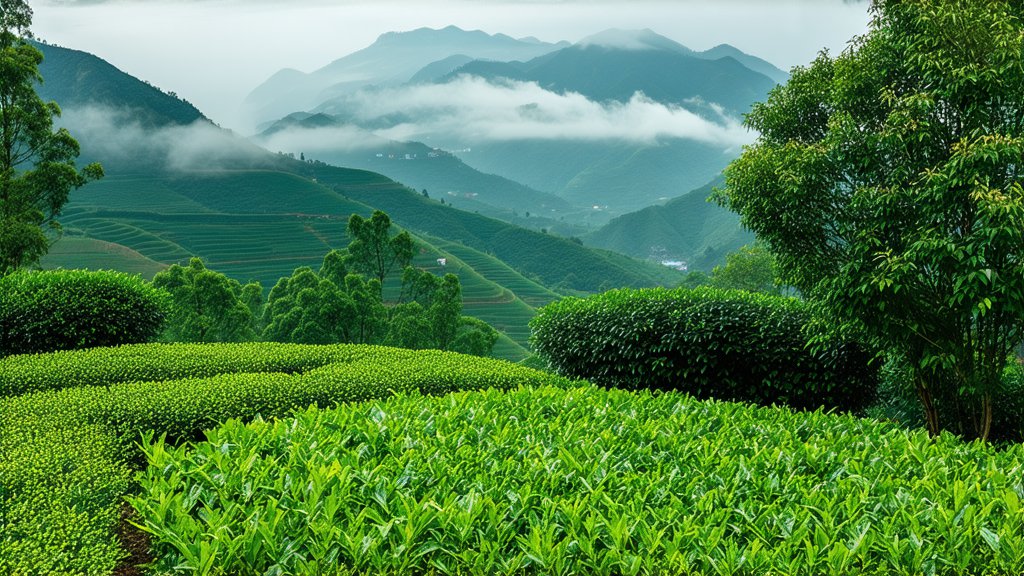
Longjing tea, often referred to as Dragon Well tea, is one of China's most renowned and cherished green teas. Originating from the picturesque region of Hangzhou, Zhejiang province, Longjing tea has a storied history that dates back over a thousand years. This exquisite tea is celebrated for its unique flavor profile, aromatic qualities, and the meticulous craftsmanship involved in its production. In this article, we will delve into the rich heritage, varieties, manufacturing processes, and appreciation methods of Longjing tea, providing international readers with an in-depth understanding of this remarkable beverage.
Historical Significance
The origins of Longjing tea can be traced back to the Tang Dynasty (618–907 AD), with its name being officially recorded during the Qing Dynasty (1644–1912). The tea gained widespread popularity during the Ming Dynasty (1368–1644), when it was designated as an official tribute to the imperial court. The emperors favored Longjing for its exceptional quality, and it soon became a symbol of sophistication and refinement among the Chinese elite.
Varieties of Longjing Tea
There are several notable varieties of Longjing tea, each distinguished by its specific growing conditions and subtle differences in taste and appearance. The primary varieties include:
-
Xin Chang Longjing: Grown in Xihu District around West Lake, this variety is considered the epitome of Longjing tea. Its leaves are flat, smooth, and bright green, resembling the shape of a spearhead.
-
Yuanjiao Longjing: Cultivated in Yuhang District, Yuanjiao Longjing shares similar characteristics to Xin Chang Longjing but may have slight variations due to differing soil and climatic conditions.
-
Qiandao Yu Longjing: Produced on Qiandao Lake's islands, this variety benefits from a unique microclimate, resulting in a distinct flavor profile.
-
Jingshan Longjing: Grown in Jingshan County, this variety is known for its robust flavor and slightly different processing techniques compared to other Longjing teas.
Manufacturing Process
The art of crafting Longjing tea involves a series of precise steps that ensure its distinctive quality and flavor. Here is an overview of the traditional manufacturing process:
-
Plucking: The tea leaves are handpicked, typically selecting only the tender buds and young leaves. This usually occurs in early spring when the first flush of growth is at its peak.
-
Withering: After harvesting, the leaves are spread out to wither under shade. This step helps to reduce moisture content and soften the leaves, making them more pliable for shaping.
-
Fixing (Pan-Frying): The hallmark of Longjing tea is its pan-frying technique. The leaves are placed in a wok and stir-fried over high heat. This process not only halts oxidation but also develops the tea's characteristic color and aroma. Skilled tea masters constantly toss and turn the leaves to ensure even heating.
-
Shaping: As the leaves begin to soften, they are shaped by hand or using specialized tools into their signature flat形态. This step requires great dexterity and experience.
-
Drying: Finally, the shaped leaves are dried to remove any remaining moisture. This can be done through additional pan-frying or by using drying machines. The goal is to achieve a moisture content that ensures the tea's longevity without compromising its flavor.
Appreciation of Tasting Longjing Tea
To fully appreciate the nuances of Longjing tea, it is essential to follow proper brewing and tasting techniques. Here is a guide to help you savor this exquisite tea:
-
Water Quality: Use fresh, filtered water to ensure the purity of flavor. The ideal water temperature for brewing Longjing tea is between 75°C to 80°C (167°F to 176°F).
-
Tea Quantity: For every 150ml of water, use approximately 3 grams of Longjing tea leaves. Adjust the quantity based on personal preference and the number of brews desired.
-
Steeping Time: The first infusion should be quite brief, around 15-30 seconds. Subsequent infusions can be progressively longer, typically up to 1 minute. Longjing tea can be steeped multiple times, with each infusion revealing different layers of flavor.
-
Brewing Method: Place the tea leaves in a preheated gaiwan or Yixing teapot. Pour the hot water over the leaves and quickly cover the vessel to retain the aroma. After the designated steeping time, pour the tea into a fair cup and then into individual茶杯 for serving.
-
Tasting Notes: Longjing tea is known for its vibrant green color, fragrant aroma, and smooth, mellow taste. Pay attention to the subtle sweetness, the vegetal notes, and the refreshing aftertaste. Each variety may offer unique characteristics, such as a buttery texture or a hint of chestnut.
In conclusion, Longjing tea is more than just a beverage; it is a cultural treasure that encapsulates the essence of Chinese tea artistry. From its ancient origins to its meticulous production process, every aspect of Longjing tea reflects a deep respect for tradition and an unwavering commitment to quality. By understanding and appreciating this remarkable tea, international tea enthusiasts can gain insight into the rich tapestry of Chinese culture and the timeless allure of Longjing tea.